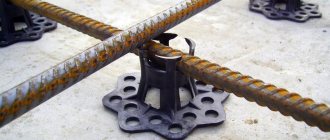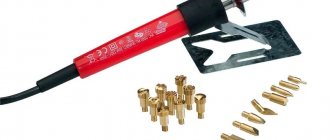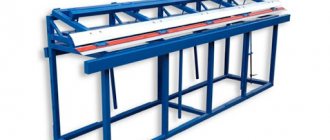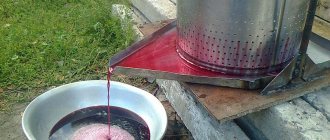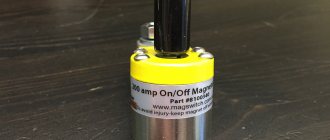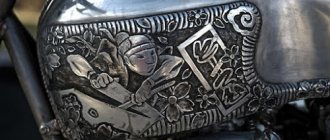Applying patina to metal and wood products
Patina is a special paint that allows you to give a metal or wooden surface an aged, noble look. The meaning of the word “patina” has nothing to do with paints. The term refers to a thin film that forms on a metal surface after prolonged interaction with oxygen.
The process of film formation on metal has been known since ancient times. Previously, this process was called bluing. However, bluing has a number of serious disadvantages:
- This is a complex technology and it is not easy to repeat it with your own hands;
- the cost of bluing is high;
- the process takes a lot of time.
Modern paints make it possible to paint a surface (not only metal, but also wood) much faster - within a few minutes. At the same time, the quality of the material is completely preserved.
Do I need to remove the patina?
This question is often asked by beginners. There is no clear answer to this. As we have already found out, a beautiful, uniform patina gives antique coins a noble appearance, emphasizing their age and authenticity. The same applies to the iridescent patina, which does not hurt the eyes. But the black and purple sagging on silver coins (they are also called “horn silver”) greatly spoils the impression. The most difficult situation is with copper. If the patina goes deep, then during the cleaning process the coin risks turning into a thin circle or even falling apart. But even removing the surface layer often changes the specimen beyond recognition. Patina is part of the coin. Removing it leads to “blurring” of the relief. The field, which previously looked smooth, turns into a collection of holes and ruts. Cleaning copper will never return it to its original appearance, which is what many people hope for when undertaking this process. Experienced collectors recommend removing patina only in cases where it is guaranteed to improve the appearance of the coin.
Patina is not acceptable on Proof quality collectible coins. However, under incorrect storage conditions (without a capsule or in a damaged seal), both silver and copper-nickel gradually become covered with a whitish patina. Sometimes the patina can even change the color of the coin, turning it brown, yellow or beige. Cleaning “Proof” coins from patina is allowed only with the help of a specialized liquid without mechanical impact, otherwise the mirror field will be irrevocably damaged by micro-scratches.
Color solutions
The most common type of patina is copper oxide. The surface painted with this paint has a greenish appearance. On other metals, oxidation processes occur differently, so patina gives different colors, for example:
- on steel - ocher or yellow;
- on bronze and brass - brown;
- on silver - darkish gray.
In construction supermarkets you can buy patina in a variety of colors:
- like silver;
- under natural copper;
- under gold;
- green copper oxide.
These are the most common colors, however, paints with more exotic shades are also available. Such paints do not imitate any metal, but are an independent color scheme. Their use is usually associated only with the desire to give the surface an antique look.
As an example, the following colors can be given:
Patina on coins made of copper alloys
Traditional tin bronze is close to copper in color. And since copper predominates in the alloy, the patina on bronze, despite the higher strength of the alloy, is similar to that formed on pure metal. As an example, we took a bronze coin from the late Roman Empire, on which bright inclusions of green-blue color are clearly visible. This is the formation of copper chloride (exposure to hydrochloric acid on the metal).
Soviet everyday coins of the older group of denominations (from 10 kopecks and above) were made from copper-nickel alloys cupronickel (until 1957 inclusive) and nickel silver (since 1961). Circular copies simply faded, becoming gray. If the coins fell into an aggressive environment (moisture or soil), the surface transformation process went faster. Copper plating of the coins occurred (copper protruding on the surface of the alloy), and the patina in appearance could resemble that formed on pure copper.
The junior group of denominations, from a kopeck to a nickel, was first minted from golden aluminum bronze and then from brass. Brass very quickly lost its original luster, darkening and tarnishing. The 1973 5 kopecks shown above show both an example that retains its stamp shine and a coin that has lost it.
From 2006 to 2014, Russian 10 and 50 kopeck coins were made from steel clad with tompak alloy (a type of brass). The coin shown above, although very dark, has acquired an unusual iridescent patina.
Application technology
The principles of patination of metal and wood are different. Powder (forge) patina is used for metal, and acrylic patina is used for wood.
Acrylic patina
This paint is almost never used on metal surfaces. The reason is poor adhesive properties. However, acrylic is perfect for painting wooden products, as it penetrates deeply into the pores of wood and emphasizes the beauty of its fibers and structure. Wood painted with acrylic patina takes on a noble appearance, its appearance is enriched with color transitions.
Note! It is not recommended to apply patina to furniture made in a modern style. Furniture painted this way will not look aesthetically pleasing.
Patina painting is often used for items made in the following styles:
The acrylic patina coating technology is called abrasion. Aging consists of first applying a layer of paint, which will act as a so-called substrate.
- Before painting, the surface is thoroughly but gently cleaned with a wire brush or coarse sandpaper. In this case, part of the surface is removed, and the structure of the tree becomes more obvious. You need to sand the wood in such a way that the movements are directed along the structure and only in one direction. This will show the texture without compromising the integrity of the wood.
- The next step is to apply a thick layer of acrylic patina. Next, you need to wait a few minutes until the material penetrates the wood. At the same time, you need to remember: the longer the pause, the darker the painted product will ultimately be.
- Excess paint is removed with a sponge or soft rag.
- After the paint has dried, you can make the color more saturated by applying an additional layer of paint material. You can also varnish the surface.
General recommendations are as follows:
Before use, the container with patina must be thoroughly mixed.
Add 1 to 5, or 1 to 10 acetone or isopropyl alcohol to it. It is advisable to use a mixture of alcohol and acetone in a ratio of 1 to 1. (The higher the alcohol content, the easier the patina will be removed; accordingly, the more acetone, the more adhesion the patina will have)
The patina must be stirred as often as possible, since the metal fractions very quickly settle to the bottom.
Therefore, it is not advisable to pour a large amount of patina into the spray gun tank.
Spray guns can be used as spray guns with a nozzle from 0.8 to 1.2, or regular ones, with a maximum nozzle of 1.5. The pressure of the spray gun is 3 or 4 atmospheres.
You can erase gold patina or silver patina after 5-10 minutes.
When erasing patina, it is recommended to constantly blow the product with a blow gun to prevent it from rubbing in.
Consumption of gold patina (silver patina) depends on the desired effect, and usually ranges from 10 to 40 g/kW m
The patinated surface should be “fixed” with a clear varnish. As a rule, non-yellowing acrylic varnish is used for these purposes.
Powder patina
The first type of powder patina is considered to be silver. It is basically a powder that must be mixed with drying oil before use. How to properly breed silverfish, read in this material.
The color of blacksmith's paints is usually matte, and the patina gives the metal a noble shine. You can purchase powder material in the form of a finished product. For greater convenience when painting, the patina can be mixed with xylene or solvent.
Note! To paint metal products, it is recommended to purchase special material for blacksmithing.
Covering with blacksmith's patina is considered quite a difficult task in the absence of the necessary experience. To apply paint you will need something like a palette where you can smear the paint material.
- Clumps of patina should be placed on one side of the palette.
- Lightly wet the brushes in solvent or xylene. Then rub the paint until the brush is completely dry.
- Next, the paint is applied with careful strokes. The product should only be touched with the tip of the brush. The result should be an uneven layer of paint and something resembling scuff marks.
The process is very labor-intensive and time-consuming. Although the result is worth it - the product will take on a noble, aged appearance.
Due to inexperience, many people try to take as much patina as possible onto the brush to avoid rubbing it after a couple of strokes. However, it is strictly not recommended to do this, since in this case it will not be possible to achieve the desired result.
So, working with patina requires certain skills, so it is difficult for a beginner to count on quick success. It is recommended that you first use objects for patination that you don’t mind spoiling. After gaining experience, you can take on more responsible work.
BRIEF RECOMMENDATIONS FOR WORKING WITH PATINA GOLD (PATINA SILVER)
Gold patina or silver patina, as well as champagne patina, are a solution of metal powders of various sizes in a mixture of solvents, with the addition of binders, adhesive additives and binders.
There are several types of gold patina and silver patina:
- ready for use (does not require dilution during application)
- concentrated (dissolves 1:5 with acetone, isopropyl alcohol, and other solvents to achieve the desired effect)
Patination or how to age metal (from here)
Patination is a technique for “aging” the surface of metal or wood, which is achieved by applying dyes based on various acids. As a result, the products acquire a special charm and the spirit of antiquity. Before carrying out manipulations, working surfaces are put in order, then treated with a special primer from a spray can, which allows the paint to better adhere to the surface. Patination of metal requires time and patience; we will look further at how to apply patina paint to the surface and what effect can be achieved.
What you need for work
The very meaning of the word “patina” has nothing to do with the dyeing process. It is of Italian origin and refers to the film that forms on metal after prolonged interaction with oxygen.
Initially, you had to wait a long time for the metal to oxidize itself, and the result was completely unpredictable; now this technique can be reproduced at home with your own hands using the following materials:
- patina of the color you like (in powder);
- liquid solvent;
- brush (size 2-3) or sponge;
- small plastic or glass trays (do not take metal ones, they can interact with the paint);
- metal product that you want to decorate.
Pay attention to safety precautions! Means for patination involve working with chemical oxidizing agents, solvents and require special care.
It is recommended not to work in confined spaces without respiratory protection. It is better to work in the fresh air, in rooms with good ventilation (with open windows, an exhaust fan on, a draft). If acid gets on the surface of the skin, immediately rinse under running water and then apply a paste of baking soda. If rashes, burns or any skin changes occur, consult a doctor immediately!
Working with gold leaf: a simple master class with video
Using gold leaf, you can decorate a simple wooden chest of drawers. Below is a simple master class on working with gold leaf, where it is used in a “mosaic” version as an ornament on the flat surface of a chest of drawers. Also, the ornament can be applied through a stencil not in pieces, but as a continuous coating.
You will need:
- gold leaf in sheets (light gold);
- stencil with ornament;
- glue for gold leaf;
- synthetic brush for applying varnish;
- masking tape;
- ruler, chalk;
- oil varnish or finishing varnish for gold leaf
Whatever glue you use for gold leaf, always read the manufacturer's instructions and follow them strictly.
- Use masking tape to glue the ornament stencil onto the surface of the chest of drawers. Apply glue for gold leaf on it.
- Stencil small pieces of gold leaf onto the surface with glue, leaving gaps between them.
- Use masking tape to mark an even strip 2 cm wide, limiting it on both sides. Cover the strip between the pieces of tape with glue.
- Place pieces of gold leaf on the glue. After they stick, carefully remove the tape.
Watch the video of the master class on applying gold leaf to wood, which clearly demonstrates the stages of this process:
Patination colors
On different metal surfaces, completely different color schemes can be achieved by patination. The most common patina color is greenish, which is produced by the oxidation of copper. On other metal surfaces, the resulting shade may be completely different:
- Rich yellow or ocher color on steel surfaces.
- Chocolate brown on brass and bronze items.
- Dark gray on silver items.
The choice of dry patina for metal work is quite varied. Powder is sold in almost every hardware store. Most common colors:
- aged silver;
- natural or oxidized copper;
- red gold.
Brighter radical colors are also available, for example, blue, lilac, red, allowing you to achieve an original effect on the surface of various metals.
Surface preparation
Decorative application of patina requires careful preparation of the surface being treated; the metal must be perfectly smooth. There should be no signs of corrosion on it; it will not allow the surface to be well primed; the top layers will quickly bubble and peel off.
All burrs must be removed, chips and potholes must be filled and sanded with sandpaper (first coarse, then finer).
The prepared product is coated with a special primer (most conveniently, from a spray can), and then metal patina paint is applied to it.
Please note that the patina effect looks best on items painted with dark, especially black paint. The painted product must dry well, otherwise the patina will not adhere well and you will not achieve the desired effect.
Patina paint application technique
There are two ways to age metal: applying patina with a brush or sponge. By placing dissolved paint on the tip of a brush, you can achieve completely different textures, directional strokes and different depths of paint. Do not wet the brush before starting work; it must be dry; a wet brush will cause smudges and drops on the metal being processed.
Do not take a brush that is too large or small - the optimal bristle size is 2-3 cm. The sponge gives a “dusty” effect, but do not press it too hard, otherwise pores will be imprinted on the surface being treated.
Keep a napkin with solvent and some of the base paint with which the product is painted at the ready. Working with the patina should be virtually error-free. Repeatedly applying patina to metal in the same place gives an unsightly “flat” effect. When painting individual elements, be careful: if you accidentally “smeared” something nearby, simply paint over this area with background paint.
On video: applying patina to metal.
Features of application to forged products
The easiest way to age forged products is to paint with metallized substances and patination coatings. It is permissible to apply crackle effect varnish on top of the base layer. It will imitate small cracks and make the surface more decorative.
To achieve a beautiful effect, the product must be cleaned of dirt and rust. Then it should be covered with a layer of primer. Metallic compounds are recommended to be applied with a brush. To create signs of aging, foam swabs and dry brushes are suitable.
Patination of metal with oxidizing agents
Obtaining a patina on metal by immersing it in various chemical compounds is a labor-intensive method, which will result in the formation of a colored film (patina) on the surface of the metal. This type is much more durable, since the film does not wear off quickly under mechanical stress, like paint. If you want to feel creative and try to age metal using patination solutions, you will need special chemicals.
The surface to be treated should be prepared, as when working with paint, but not primed or painted, but degreased and bleached in an acid solution. You can carry out all the manipulations at home, create a masterpiece with your own hands or give new life to old objects.
How to do classic patination at home and get the colors you want? When patinaing brass, the most common colors sought are black or deep brown, olive, dark orange, or mouse gray. The brown color is achieved by immersing the metal in a solution of sodium thio-sulfite, popularly known as photofix.
An acid (sulfuric, hydrochloric, nitric) is first added to the prepared solution and the metal is lowered into it. Do not overexpose the product! The patina will appear very quickly. Work carefully! Use rubber gloves and take short breaks every 15-20 minutes.
Important! The coating is not very durable; it must be coated with varnish on top.
How to get other shades:
- To obtain an olive tint, brass products are immersed in a solution consisting of ammonia, water and chlorinated copper oxide (in a ratio of 4/5/2). Be very careful - the composition is toxic.
- A thick orange tint on brass will be given by a mixture of potassium sulfite, and a gray gray tint will be produced by liver of sulfur (a sintered mixture of sulfur 5 g in powder and potash).
- On copper, as on brass, the patina is very impressive. You can get a black tint on it (when immersed in sulfuric liver solution) and ancient blackness (if you mix 2-3 g of sulfuric liver, add the same amount of ordinary salt).
- Copper sulfate together with zinc chloride will give a blood-red patina.
- The luxurious blue color of steel will be given by a mixture of hyposulfite and acetic acid lead (150 g plus 50 g per 1 liter of water). The patina on steel appears both when immersed in a cold solution and when it boils (the shade will be more saturated).
- You can achieve a raven wing shade (“bluing”) by immersing the product in a chromium solution at the rate of 100 g per liter of water. The steel will acquire an amazing metallic glow with a deep, black-blue tint. After about 20 minutes, the steel will be covered with a film of an amazing blue-black hue.
- When bronze items are patinated, they acquire various shades of green and blue. To obtain a light green tint you will need 3 parts aluminum chloride, 1.5 5% vinegar and 5 copper salts. The exposure time of the desired shade on bronze is determined visually. The longer the exposure, the deeper and darker the resulting shade will be.
Available effects on metals
Metal objects are not so often found in apartments. However, with the help of such elements it is possible to create a unique design. Their functions can be performed by candlesticks, lamps, chandeliers. Such products have an attractive appearance. However, in some interiors they want to give a special antique effect. For this purpose, the patination technique is used. With its help, you can achieve different results:
- The antique effect on silver objects looks very beautiful. This type of metal is highly susceptible to sulfur. Its use allows you to get different colors - from pale yellow to bright turquoise. Under the influence of chlorides and amino acids, it is possible to achieve a black tint. However, in this case the film will turn out to be quite rough. If you simply blacken the silver, you will be able to achieve an excellent antique effect.
- Gold does not react with virtually any chemical substances. If the alloy contains honey or nickel, after some time orange or brown spots will appear on the surface.
- Copper products are often found in residential premises. The formation of a green film on a copper base is observed under the influence of chlorides. It is possible to obtain black color due to interaction with the oxide. Copper reacts very quickly.
- Bronze products are easily subject to molecular destruction. In this case, a blue or green coating may form on the surface. The most noble result can be achieved with a black patina. This effect is created by processing the oil. Copper shavings are used for calcination.
See also
Features and types of paints for road markings, brand ratings and application
What is patination and how to apply patina yourself
Shiny kitchen fronts, without a single scratch or stain, look good in a modern minimalist, techno or hi-tech interior. But where authenticity is primarily required from the material and objects, patinated facades will be much more appropriate.
Doing this naturally takes too long, but resorting to imitation with your own hands is quite possible.
How to make furniture with a golden patina using wax
A win-win option for the final stage of decorating furniture is to imitate patina with gold wax. Metallic wax is available for sale in various shades of gold, bronze, tin, silver - in jars or tubes. It is applied in a very thin layer so that the imitation looks like a real patina.
To make a patina on furniture with your own hands using wax, follow these rules:
- Wax can be applied to the painted surface with your finger, gently rubbing, here and there creating the appearance of slight abrasion.
- Wax can also be applied with a swab made from a cosmetic disc or cotton cloth.
- Gold wax is especially suitable for patination of panels and corners on cabinet doors.
- Gold wax will help highlight the beauty of the carved part.
And in conclusion, we suggest that you familiarize yourself with a selection of photos of furniture with golden patina in various interiors of houses and apartments:
Patination of wood
This process refers to a method of aging wood in order to visually give it age. The technique is actively used in classic and rustic kitchen interiors, since in these cases it is assumed that furniture and other household items have been in use for a very long time.
The technology of the methods is different, but the goal is the same - to give wood or wood material a coating that forms on the solid wood during a long period of use. Moreover, this coating occurs when the furniture is cared for, and not just used, and therefore is so highly valued from an aesthetic point of view. At home, reproducing patina on wood or metal is not that difficult. Our master class offers many options that can actually be done with your own hands.
You can use wax, bitumen, and acrylic patina - depending on the future type of the product, your own skill and the nature of the material. It is worth immediately noting that different methods are usually used to patina metal and wood, although there are exceptions.
- Stain is the most common composition for giving wood a darker, noble shade. The stain is combined with preliminary brushing (removing soft wood fibers) and treatment with shellac primer or antique wax. The method is perfect for doing at home, but limits the choice to a natural range of colors: the colors of silver, gold, and brass are not allowed here. For MDF and chipboard boards, any master class does not allow the use of this method.
- Bituminous patina - it can be applied with a regular sponge and washed with white alcohol. The bituminous composition is easily absorbed into the pores, revealing the wood structure and aging the wood. The result must be sealed with varnish, preferably shellac. This method is not suitable for patination on metal.
- Acrylic patina is a universal product and is suitable for processing wood, metal, and plaster. Acrylic patina paint can have any color, including the fashionable shade of silver and gold. It is applied both to the entire surface - smooth facades, and to threads or convexities. Acrylic paint is most often combined to provide a contrast between a dark natural color and an “aged” one: for example, oak and gold, white oak and silver, walnut and red gold, and so on.
Acrylic paint can be mixed and applied layer by layer, creating very complex visual effects: appropriate recommendations can always be obtained from a master class on the forums. In addition, acrylic paint can be perfectly combined with decoupage, varnishing, painting and other methods of decoration.
- Wax patina provides not only the effect of antiquity, but also the most beautiful tints of color, including metal ones - silver, brass, bronze. Moreover, this effect is obtained on wood. The wax patina is ideal for highlighting carvings, cures slowly and is very convenient for any DIY project. Any master class recommends using a wax composition on carved dining room furniture.
- Shellac varnish itself creates a yellowish or reddish-brown tint depending on the number of layers. Sometimes this is enough to create an aging effect, especially in combination with decoupage. However, almost any master class suggests using shellac varnish as a finishing or intermediate coating not only for decoupage, but also for painting.
- Oil patina - any master class recommends using the composition for both wood and metal. Its properties resemble wax and also hardens slowly. It cannot be used in the classical decoupage technique, since the oil patina dissolves the paper.
Types of patination compositions
Depending on the idea, patination allows you to achieve different effects:
- complete aging;
- partial aging;
- craquelure.
Patination substances may differ in consistency:
- Thick - similar to the paste that is used for processing wood. With its help, it is possible to obtain yellow or red tones reminiscent of gold.
- Liquid - made on the basis of water or polymers. Such products give the surface shine and make it more noble in appearance.
- Facet varnishes - help to obtain an aged surface due to the formation of cracks on it.
Acrylic
This material is considered universal. It can be used not only for metal, but also for wood or plaster. This substance is water-based. With its help, it is possible to create a durable coating, which is characterized by a high degree of adhesion to the surface. After applying the composition, a film appears on the product that protects it from germs and fungi.
Acrylic patination is considered a simple process. Even a beginner can handle this technology.
To get an original product, it is recommended to combine compositions of different colors. It is also permissible to apply various shades of patina in several layers. This will help achieve the creation of a complex ornament.
Moreover, there are a lot of acrylic colors on sale. In this case, you can purchase metallic or classic tones. If necessary, such patination can be combined with other techniques - ordinary painting, decoupage or varnishing.
stain
The use of such compositions is considered a simple way to artificially age a surface. The material helps to refine the products, making them more sophisticated and attractive. For stain application to be successful, it is important to properly prepare the surface.
Expert opinion
Zakharova Irina Yurievna
Cleaning professional with 15 years of experience. Our best expert.
Ask a Question
After completing the patination process, the product must be coated with wax or shellac primer.
Bitumen
This building material helps give the surface a special appearance, emphasizing all the relief elements. After applying the substance to the product, excess must be removed.
Bituminous patina is made on the basis of turpentine, concrete polymer and white spirit. It cannot be considered a finishing material. After drying, the surface should be coated with shellac to secure the result. Otherwise it won't last long.
Wax
Quite often, wax patinas are used as a finishing coating. They are presented in the form of a water-based paste. To prepare this composition, natural wax and metal dust are used. Colorless formulations are also available for sale. After applying them, a beautiful pearlescent shine remains.
See also
Top 4 types of paints for plastic and how to apply correctly, possible problems
With the help of wax patina, it is possible to emphasize the structure of the surface and tint it. It is important to consider that the material is easy to apply. It dries slowly and rubs easily. Therefore, you can use the substance at a comfortable pace. There are different shades of wax on sale - golden, bronze, silver, brass.
Oil
Oil patina is considered a very convenient option. It does not hide the natural shade of the material and helps to highlight the pattern. The characteristics of the substance resemble a waxy patina. It is easy to apply and dries slowly. It is important to take into account that the composition is prohibited from using the decoupage technique, since it causes the paper to dissolve.
Shellac
This material itself is yellow or red-brown in color. As the number of layers increases, it becomes darker. The substance can be used alone or combined with decoupage. Shellac can be used as an intermediate or finishing coat. To work with it you need to use a brush or sponge.
Applying patina to wood
This process is simple and can be done at home. However, there is a difference in the processing and preparation of wood, metal and MDF and chipboard. The latter have a uniform structure, unlike wood, and therefore their painting, aging, decoupage and all other techniques have their own characteristics.
Preparatory stage
Wood and wood-fiber materials in kitchen furniture are not used in their original form. The furniture surface is protected by varnish, acrylic or PVC film, lamination, etc. Depending on the nature of this coating, you have to choose a paint with a patina and a method. The patination master class takes into account all the features of materials.
- Wood for patina, tinting and varnishing is treated with a wire brush or coarse sandpaper. This method is called brushing. Its essence comes down to removing soft fibers and exposing the structure from harder ones. Brushing reproduces the natural aging process, but in an accelerated form. After removing the fibers, the surface is cleaned and treated with a degreasing compound.
The wood is not brushed before staining and painting, but only cleaned. Sanding is only needed to remove the varnish, if any.
Veneered MDF board can, in principle, be processed with sandpaper to give a scuffed effect, especially using the decoupage technique. But in practice, another method is preferable.
- A layer of barrier primer is applied to the MDF or chipboard board - this composition ensures adhesion of the top layer of MDF and chipboard to the primer, patina - gold, dark, silver color or paint. After drying, apply a second layer - polyurethane primer. It forms a base that will imitate scuffs or cracks. This second layer on the MDF board is then sanded with sandpaper to replicate the natural grain of the old wood.
The paints and compositions for patina for wood and MDF are the same. As for metal, in a furniture set it is represented only by fittings. Some of the compositions can be used for painting metal.
Patination of furniture using stain
This is the most accessible way to do it yourself; the master class lessons will tell you how to do it correctly. The effect is as close as possible to natural, which is best suited for classic styles. The color of the kitchen furniture will be darker, which needs to be taken into account.
- A layer of water-based stain is applied to the entire surface of the façade. The color of metal - brass, silver, gold - cannot be obtained here, but you can give cheap wood the appearance of expensive wood - oak, beech, walnut.
- Using a soft sponge, part of the composition is erased so as to create the effect of antiquity - from the middle areas, while the border, milling elements, and cracks remain untouched. You can use a sponge or brush. After drying, apply a second layer of stain, but always on a different base - white alcohol, for example.
- After drying, the surface is covered with shellac varnish with your own hands. If you want to enhance the effect of antiquity, antique wax is also rubbed into the wood.
How to quickly make a patina on furniture: step-by-step instructions
Finishing furniture elements with light surfaces with gold leaf will be a worthy decoration, but the main thing is not to overdo it in the amount of gold decor.
Gold leaf goes well with the dark surface of furniture, for example, when it acts as noble abrasions.
The following step-by-step instructions with photographs will tell you how to make a patina on furniture quickly and easily:
- On the face-covered surface of the ends of the stool, as described above, apply a gold leaf with lining paper, previously cut into small longitudinal pieces.
- After waiting for the glued gold leaf to dry completely (the drying time is recommended by the glue manufacturer), walk over the surface with medium or fine-grained sandpaper.
- Rub the surface across the grain or in a circular motion until you achieve the desired abraded effect.
- The end parts are subject to abrasion when using the stool, so be sure to cover them with a protective layer of gold leaf varnish.
Applying patina or patination. Compositions and application.
Patina
is a greenish-brown coating formed on objects made of copper and bronze as a result of oxidation under the influence of the environment. In a broader sense, patina refers to signs of aging on any objects made from any materials.
Patination in decoration is an imitation of darkening of the surface, which in its natural form appears as color changes after a long period of time, oxidation and frequent contact with hands. Patina can be dark, colored, metallic, white (liming).
The patination composition is applied to the edges, corners of the object, or vice versa, into the recesses of the relief parts.
Properties of patina
The name “patina” was invented by the Italians. Patina was originally thought to be a naturally occurring coating on copper. It did not always look like a work of art, but over time it became fashionable to have “antique” forged products in homes. Demand creates supply and patina began to be applied to metal artificially, using acids and oxidizing agents . As a result, the interior items looked great.
But in addition to purely decorative properties, patina also has important practical meaning:
- protects the metal from external influences;
- protects against rust;
- gives the surface water-repellent properties.

